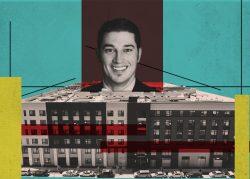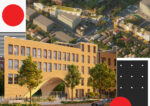Pollution is paying off for affordable housing developers in California.
The agency responsible for distributing the state’s cap-and-trade funds said some $808 million has been awarded to 37 affordable housing projects designed to cut greenhouse gases throughout the state, the most money awarded in the history of the program.
“Meeting our affordable housing goals and advancing California’s climate leadership are priorities that go hand in hand, as these projects demonstrate,” Governor Gavin Newsom said in a statement. “It is important now more than ever to build homes for Californians close to the places they need to be every day, like jobs and schools, as an integrated solution to reduce harmful emissions and create housing that meets the needs of all our communities.”
The California Strategic Growth Council’s Affordable Housing and Sustainable Communities Program administers funds brought into the state by auctioning off the right to create greenhouse gas emissions. It provides grants and loans for programs and capital development projects that reduce vehicle miles traveled, which in turn reduce emissions. It targets affordable housing development and projects that benefit disadvantaged and low-income communities. About two-thirds of the funding announced on Wednesday went to those projects.
The CSGC initially predicted that it would have $785 million to award. That amount would have already put the budget higher than any previous year of the program, which began in 2012. But the emissions auctions did better than expected, resulting in about $10 million in additional funding, plus about $15 million unused from previous years, which brought the total amount to $808 million.
The Bay Area received the most funding, with $280 million for 12 projects, plus an additional $76 million for the Sacramento area and $17 million for an affordable apartment development in South Lake Tahoe. San Francisco received more than $80 million for three projects that will build more than 300 units near transit in the city. Almost three-quarters of the city’s requested funds were granted, according to a CSGC report.
The one-mile city of Emeryville in the East Bay got all the $20 million it requested, according to Mayor John Bauters. Half the money will go to an affordable housing project and the other half will go to a new BART car and a separated bike lane, he said.
Coastal Southern California received about $265 million, about $150 million of which is designated for Los Angeles housing projects and the expansion of Big Blue Bus lines into unincorporated LA county. It also set aside almost $21 million for a 300-unit complex with co-working space in Compton.
For the first time, the CSGC guidelines included an authorization to use discretionary funds to make sure that projects throughout the state were funded. One $16.5-million project designed to revitalize downtown Shasta Lake in the northernmost part of the state was identified as a Native American tribal project.
“Projects in Bakersfield, El Centro, Farmersville, Guadalupe, National City, and Shasta Lake all demonstrate how low-VMT developments can fit into local contexts, particularly in areas without histories of dense, transit-oriented development,” according to the staff report.
Read more





